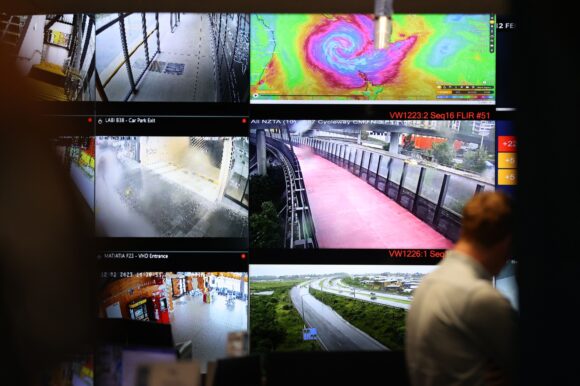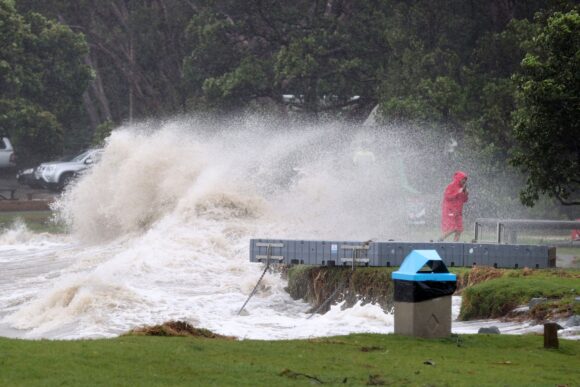Tens of thousands of homes in northern New Zealand are without electricity as a powerful cyclone begins lashing the South Pacific nation, bringing high winds and intense rainfall.
Cyclone Gabrielle is tracking north-east of New Zealand and the center of the storm is expected to be off the coast of largest city Auckland late Monday or early Tuesday. Officials are warning people to be ready for high seas and storm surges, surface flooding, falling trees and landslips. Some residents in low-lying areas north of Auckland and on the East Coast have been urged to self-evacuate.
“The worst is yet to come,” Prime Minister Chris Hipkins told reporters Monday in Wellington. “We have to adapt and respond as the weather that we are dealing with changes.”
Residents and business owners across the upper North Island have been preparing for the wild weather for several days as forecasters monitored the cyclone, which began in the Coral Sea and proceeded southwards across Norfolk Island toward New Zealand. The storm is set to shift and impact eastern areas Tuesday.
Officials said almost 50,000 homes were without power and some may be impacted for several days as crews battle high winds and difficult terrain to reconnect wires.
Gales as high as 160 kilometers (100 miles) per hour have been recorded at the tip of the Coromandel Peninsular and other offshore islands nearest to the cyclone’s track. Wind gusts in Auckland have reached as much as 130 kilometers per hour, and the MetService has a category red strong wind warning in place.
Heavy rain has been experienced north of Auckland with about 180 millimeters (7 inches) falling over 24 hours in the northern town of Whangarei. Residents of low-lying areas in Whangarei have been urged to evacuate as a high tide there increases the risk of flooding.

In Auckland, there will be pockets of high intensity rain of as much as 40 millimeters an hour through until early Tuesday, the MetService said.
States of emergency have been declared in several districts across the upper North Island. Hipkins said that so far, the storm has not met the threshold for a national state of emergency but officials are updating the government every four hours.
Auckland International Airport said nearly 400 flights were canceled Monday, including all 301 scheduled domestic arrivals and departures. About 45,000 people were affected, it said.
Air New Zealand said more than 500 of its services around the upper North Island were grounded and estimates about 10,000 international travelers had their plans disrupted. It expects to resume flying domestic and international jet services through Auckland from mid-morning Tuesday.
Hipkins himself was stuck in Auckland when domestic air services were grounded, and his formal statement to mark the re-opening of parliament has been pushed back one day to Wednesday because a large number of parliamentarians are unable to return to Wellington.
The government today announced a NZ$11.5 million ($7 million) package of support for agencies providing help to affected people.
The cyclone comes two weeks after Auckland, home to 1.6 million people, was smashed by a storm that caused extensive damage from widespread flooding and landslides. Four people died.
Photograph: Mathesons Bay Beach on the Matakana Coast in Auckland on Feb. 13, 2023. Photo credit: Fiona Goodall/Getty Images
Was this article valuable?
Here are more articles you may enjoy.



 Three Charged With Helping Agents Cheat on Florida Insurance License Exams
Three Charged With Helping Agents Cheat on Florida Insurance License Exams  Workers Sue Disney, Say They Were Wrongly Induced to Move to Florida
Workers Sue Disney, Say They Were Wrongly Induced to Move to Florida  QBE to Non-Renew $500M of North American Mid-Market Biz
QBE to Non-Renew $500M of North American Mid-Market Biz  Zurich to Buy AIG’s Travel Insurance Business for $600 Million
Zurich to Buy AIG’s Travel Insurance Business for $600 Million 

